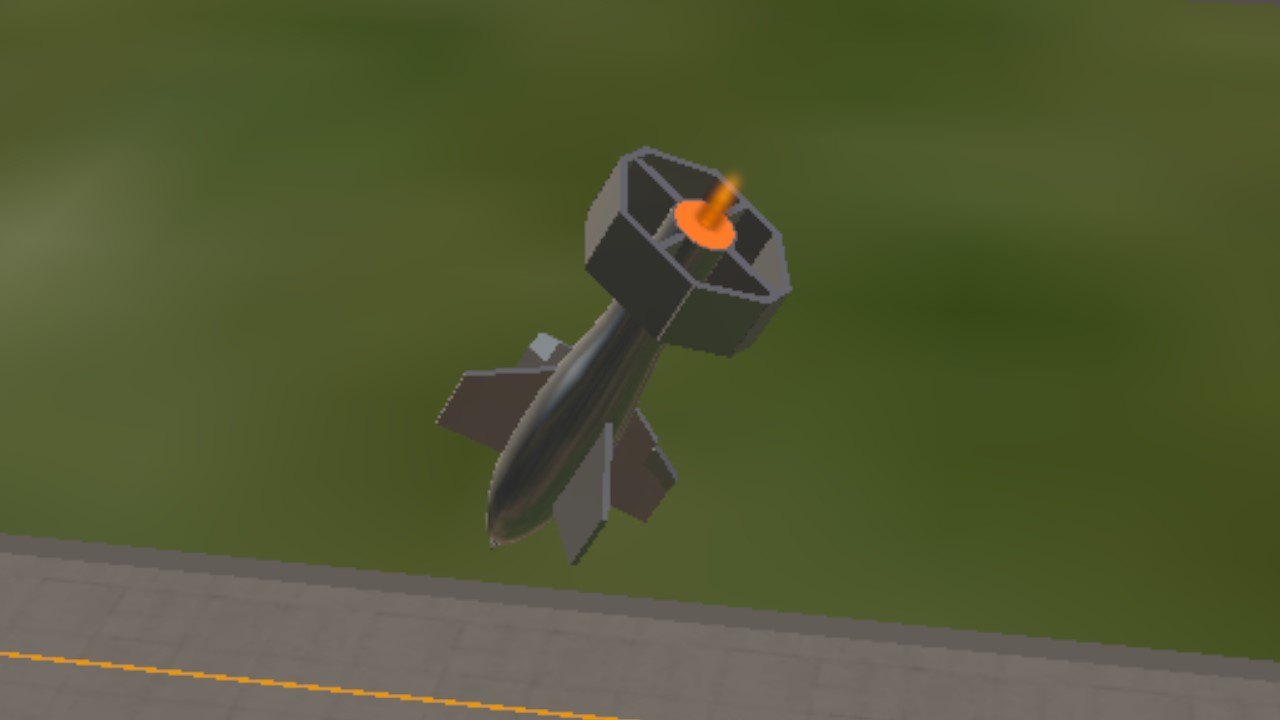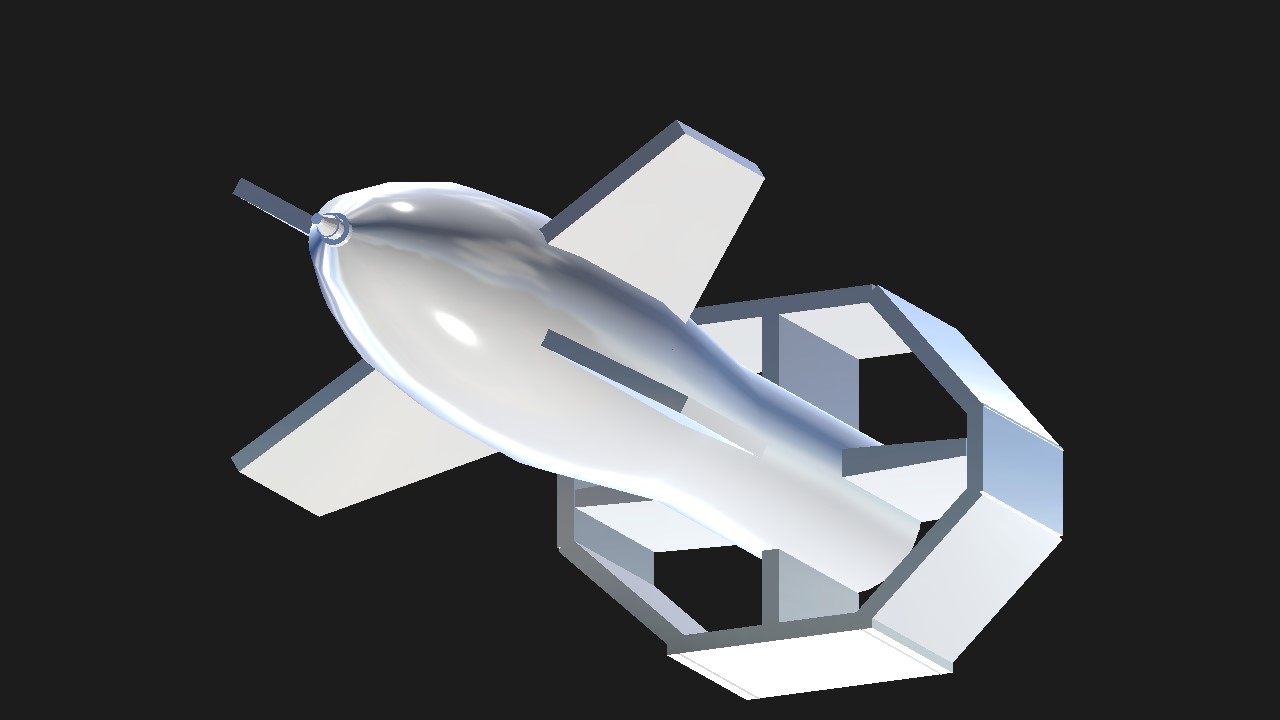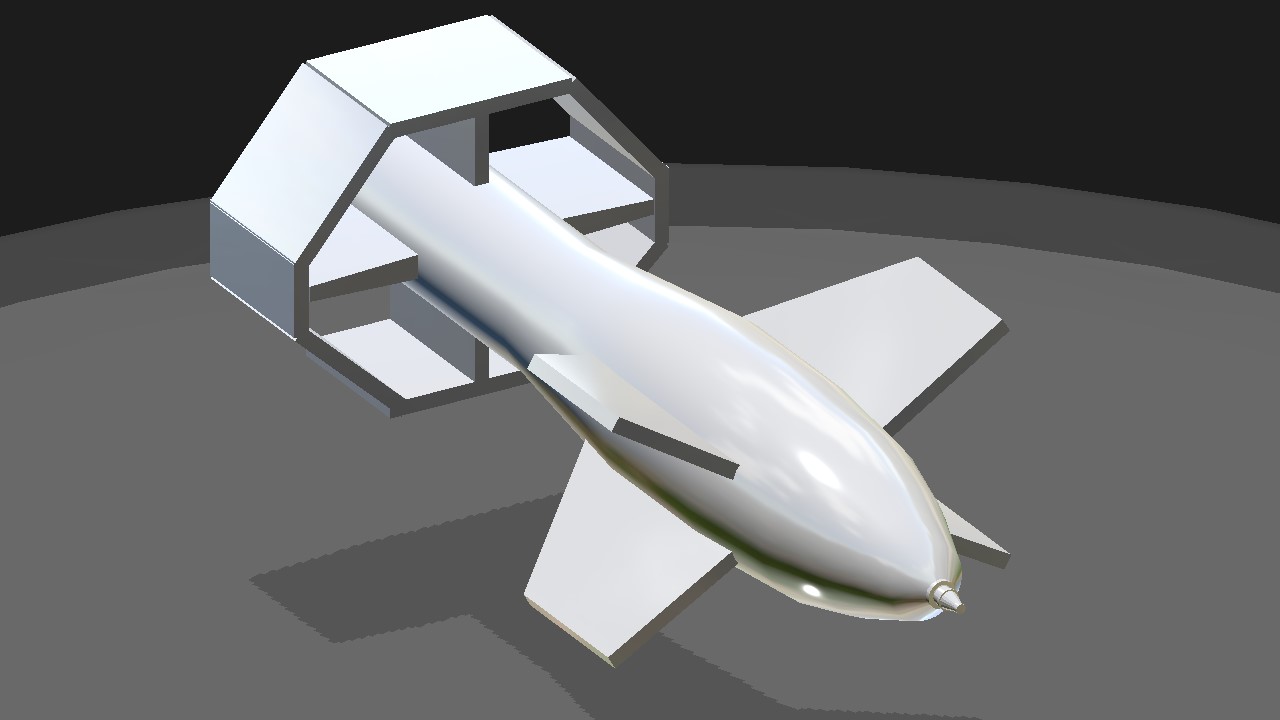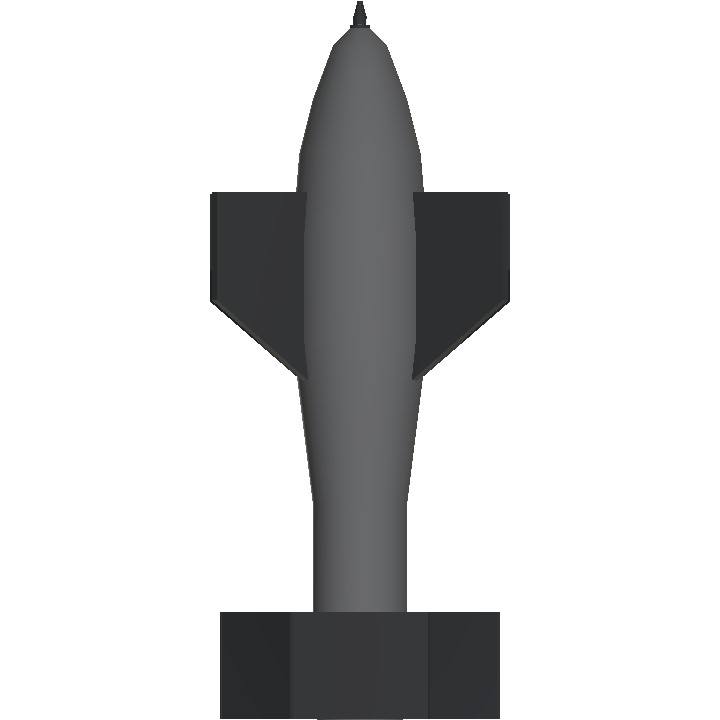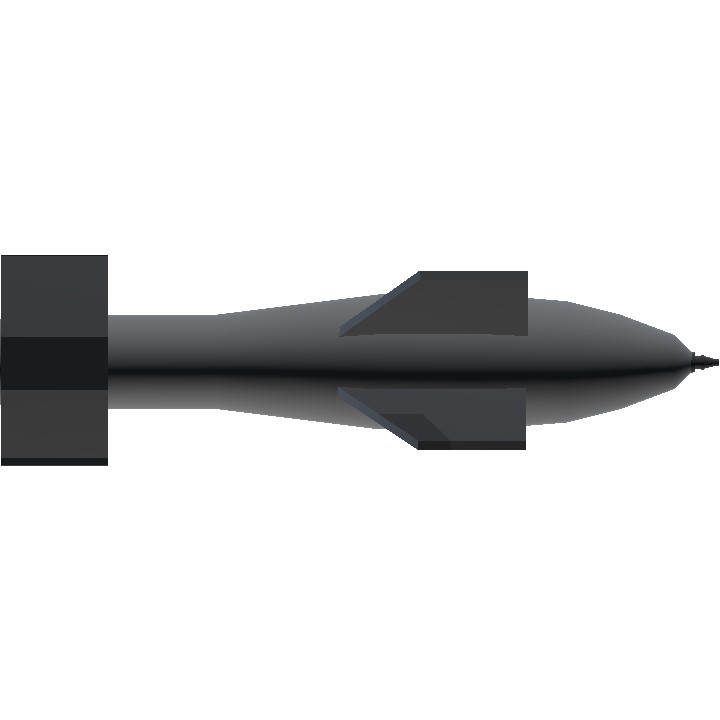ordered by : @Boeing727200F : ordered a bomb
FRITZ X guided bomb
WIKI :
Fritz X was a German guided anti-ship glide bomb used during World War II. Fritz X was the world's first precision guided weapon deployed in combat[1] and the first to sink a ship in combat. Fritz X was a nickname used both by Allied and Luftwaffe personnel. Alternative names include Ruhrstahl SD 1400 X, Kramer X-1, PC 1400X or FX 1400 (the latter, along with the unguided PC 1400 Fritz nickname, is the origin for the name "Fritz X").

Usage in combat:
The only Luftwaffe unit to deploy the Fritz X was Gruppe III of Kampfgeschwader 100 Wiking (Viking), designated III./KG 100; the bomber wing itself evolved as the larger-sized descendant of the earlier Kampfgruppe 100 unit in mid-December 1941. This unit employed the medium range Dornier Do 217K-2 bomber on almost all of its attack missions; in a few cases near the end of its deployment history, Dornier Do 217K-3 and M-11 variants were also used. The Fritz X had been initially tested with a Heinkel He 111 bomber, but was never taken into combat by this aircraft. A few special variants of the troublesome Heinkel He 177A Greif long-range bomber were equipped with the Kehl transmitter and proper bombracks to carry the Fritz X, and it is thought that this combination might have seen limited combat service, at least with the combinations known to have been involved in test drops. It was found that the launch aircraft had to "toss" the bomb slightly, climbing and then descending, to keep it in view ahead.[6]
The Fritz X was first deployed on 21 July 1943 in a raid on Augusta harbour in Sicily. Several attacks around Sicily and Messina followed, but no confirmed hits were made and it appears the Allies were unaware that the large bombs being dropped were radio-guided weapons.[10]
On 9 September, the Luftwaffe achieved their greatest success with the weapon. After Pietro Badoglio publicly announced the Italian armistice with the Allies on 8 September 1943, the Italian fleet had left La Spezia and headed to Tunisia. To prevent the ships from falling into Allied hands, six Do 217K-2s from III. Gruppe of KG 100 (III/KG 100) took off, each carrying a single Fritz X. The Italian battleship Roma, flagship of the Italian fleet, received two hits and one near miss, and sank after her magazines exploded. 1,393 men, including Admiral Carlo Bergamini, died. Her sister ship, Italia, was also seriously damaged but reached Tunisia.[8]
The American light cruiser USS Savannah was hit by Fritz Xs at 10:00 AM on 11 September 1943 during the invasion of Salerno, and was forced to retire to the United States for eight months of repairs. A single Fritz X passed through the roof of "C" turret and killed the turret crew and a damage control party when it exploded in the lower ammunition-handling room. The blast tore a large hole in the ship's bottom, opened a seam in her side, and blew out all fires in her boiler rooms. Savannah lay dead in the water with her forecastle nearly awash, and eight hours elapsed before her boilers were relit, allowing the ship to get under way for Malta.[8] USS Savannah lost 197 crewmen in this attack. Fifteen other sailors were seriously wounded, and four more were trapped in a watertight compartment for 60 hours. These four sailors were rescued when Savannah had arrived at Grand Harbor, Valletta, Malta on 12 September.
Savannah's sister ship, USS Philadelphia, had been targeted earlier the same morning. The Fritz X just missed the ship, exploding about 15 metres away. Damage was minimal.[11]
The Royal Navy's light cruiser HMS Uganda was hit by a Fritz X off Salerno at 14:40 on 13 September. The Fritz X passed through seven decks and straight through her keel, exploding underwater just under the keel. The concussive shock of the Fritz X's underwater detonation close to Uganda's hull extinguished all her boiler fires, and resulted in sixteen men being killed, with Uganda taking on 1,300 tons of water. Uganda was towed to Malta for repairs.
Two merchant ships may have been hit by Fritz X bombs at Salerno, though the evidence is uncertain. SS Bushrod Washington was hit by a glide bomb, either a Fritz X or a Hs 293, on 14 September while offloading a cargo of fuel.[Note 2] SS James W. Marshall was set on fire by a conventional bomb, Hs 293 or Fritz X on 15 September. As with Bushrod Washington, the nature of the weapon that damaged James W. Marshall is uncertain. A witness aboard a ship nearby, Joseph A. Yannacci, attributes the attack to Ju 87 "Stuka" dive bombers, which were too small to carry glide bombs. An attack with a Fritz X cannot be ruled out, but there is at least an equal case that, if a glide bomb was involved, it was an Hs 293 from II./KG 100; Luftwaffe records show that II./KG 100, armed only with Hs 293 glide bombs, was active over Salerno that day.
KG 100 achieved another success with Fritz X while the British battleship HMS Warspite was providing gunfire support at Salerno on 16 September. One bomb penetrated six decks before exploding in number 4 boiler room. This explosion put out all fires and blew out the double bottom. A second Fritz X near-missed Warspite, holing her at the waterline. She took on a total of 5,000 tonnes of water and lost steam and consequently all power, both to the ship herself and to all her systems, but although the damage had been considerable, Warspite's casualties amounted to only nine killed and fourteen wounded. She was towed to Malta by tugs Hopi and Moreno, then returned to Britain via Gibraltar and was out of action for nearly 9 months; she was never completely repaired, but returned to action to bombard German positions in Normandy during Operation Overlord.[8]
The last Fritz X attack at Salerno lightly damaged the US light cruiser Philadelphia with two near misses on 17 September. This attack is sometimes reported as taking place on 18 September but US Navy records show the cruiser Philadelphia departed Salerno the night of 17/18 September. According to Luftwaffe records, III./KG 100, the Luftwaffe unit armed with the Fritz X, flew its last mission on 17 September. Other ships damaged by Fritz-X included Dutch sloop Flores and British destroyer Loyal.
[CONTROLS]
AG/1 : Gyro
Specifications
General Characteristics
- Created On Android
- Wingspan 8.7ft (2.7m)
- Length 21.9ft (6.7m)
- Height 6.4ft (2.0m)
- Empty Weight 4,513lbs (2,047kg)
- Loaded Weight 5,164lbs (2,342kg)
Performance
- Power/Weight Ratio 2.175
- Wing Loading 31.0lbs/ft2 (151.1kg/m2)
- Wing Area 166.8ft2 (15.5m2)
- Drag Points 614
Parts
- Number of Parts 29
- Control Surfaces 6
- Performance Cost 108

